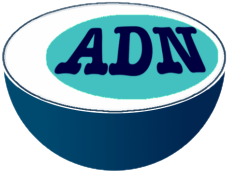Orateur
Summary
In 2012 the first genome-wide simulation of the Yeast nucleus has been published (Wong & al, Current Biology 2012}. They have shown we can retrieve the experimental Hi-C map with a polymer brush modelling of the Yeast chromosomes. In the case of Drosophila melanogaster it has been shown (Sexton & al, Cell 2012) long genomic distance contact and specific patterns of the Hi-C map that cannot be reproduced only by chromosome territories.
Since high-throughput techniques become available, we are able to distinguish epigenetic domains with the study of regulatory proteins like in Drosophila (Filion & al, Cell 2010).
Heterochromatin can be divided in one part in which most of the genes are silenced (called black chromatin), another part associated to Polycomb like proteins that recognise H3K27me3 mark that is involved in the regulation of differentiation and development (called blue chromatin).
The third part of heterochromatin is associated with the HP1 proteins that act like a docking platform for functional proteins (Greil & al, The EMBO Journal 2007) (called green chromatin).
The last domain is the euchromatin in which most of the genes are actives (H4K4me1,2,3 gene activation marks).
We present here a chromosome-polymer model and the corresponding simulations based on the “physical epigenetic interactions” and on the Rabl initial conformation of the chromosomes of the Drosophila melanogaster epigenome 3D folding.

